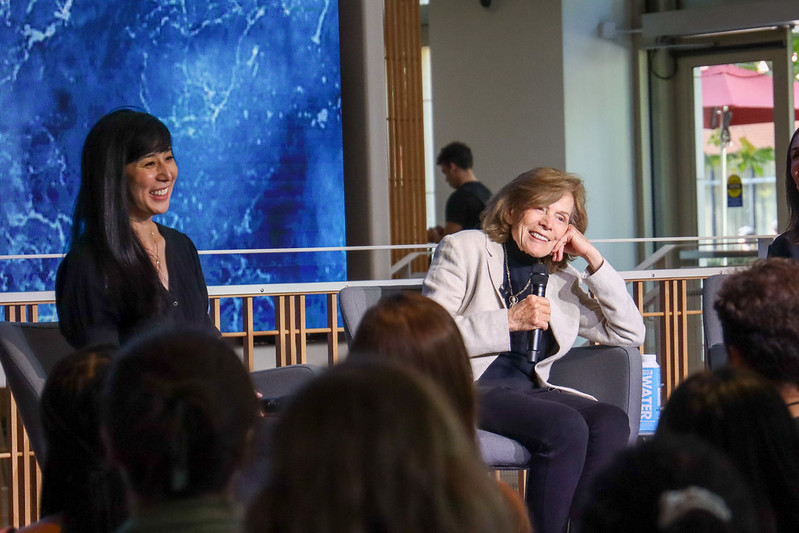I spend a lot of time working with students, journalists, and scientists to support their efforts as climate communicators. To teach them, my colleagues and I draw on research published by experts in the field. I believe in this approach and I also believe there is much to learn from lived experience. To that end, the great marine scientist and oceanographer Dr. Sylvia Earle was at the Annenberg School last week as our first Climate Communicator in Residence.
In person, Dr. Earle is nothing short of transfixing. You can hear a pin drop when she speaks to packed crowds. No one glances at their phones. It’s clear a living legend is in the house. (No, really, a living legend… as designated by the Library of Congress.) How does she do it? What techniques does Dr. Earle use as a climate communicator? Here’s what I noted after listening to her speak numerous times in a variety of contexts this past year, and following a one-on-one discussion with her about her communication style.
Reinforcing through repetition
Dr. Earle’s use of repetition gives her phrasing a poetic quality while underscoring essential points. At a session for faculty members she said, “I’m not afraid of sharks. I’m afraid of my own species.” And when asked about the western concept of growth, she noted, “We need growth of good ideas. Growth of spirit. Growth of humility.”
Simple sentences, deep meaning
I asked Dr. Earle what she thinks about carbon capture and storage initiatives. (CCS solutions aim to take carbon out of the air and insert it back into the earth.) Dr. Earle, a big advocate of nature-based solutions, said, “Carbon capture and storage is called a tree.” When I asked why she thinks climate communication is important she said, “If you don’t know, you can’t care.” What’s her number one tip for taking care of the planet? “Protect what we have.” These are declarative sentences anyone can understand (no statistics, no acronyms) and they carry more weight than their plain spokenness might convey at first listen.
Controlled but off the cuff
Dr. Earle has a low, quiet, and steady voice. Her cadence is measured, never rushed. She never reads off of paper, a prompter, or a screen. “I tend to throw away the script,” Dr. Earle told me. As a result, the connection between Dr. Earle and her audience is palpable.
Image-driven presentations
Dr. Earle is comfortable speaking without slides but she told me that when she does make a visual presentation, she includes as few words as possible to keep her audience engaged and in the moment.
Audience awareness
Dr. Earle likes to move on the stage, refusing the chairs often provided for her talks. She told me she wants to have a conversation with the audience, not at the audience, and that before each talk she delivers, she asks herself the following questions:
- Who is the audience?
- Why are they there?
- What do I want to share?
Dr. Earle noted of audiences, “They are there for a reason. You are the reason they are there.
Make it worth it.” I think I can speak on behalf of Annenberg when I say that our time with Dr. Earle was most definitely worth it.
Allison Agsten is the Director of the Center for Climate Journalism and Communication.
